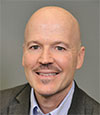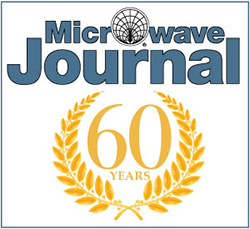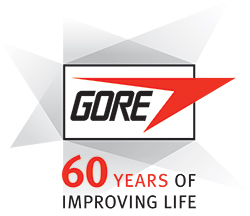
In July of 1958, a group of industry pioneers led by William “Bill” Bazzy and Theodore “Ted” Saad launched Microwave Journal. This month we celebrate our diamond anniversary in our 60th year of publishing with a cover feature focused on diamond technologies used in RF/microwave applications from GaN on diamond to diamond passive devices, to diamond materials in packaging. We would also like to celebrate other companies and organizations celebrating their diamond anniversaries this year including W.L. Gore, Rosenberger, C.W. Swift, DARPA and NASA.
Microwave Journal staff have designed a special cover for this celebration, using a matte finish background and a glossy surface treatment on the diamond graphic to accentuate the diamond’s “shine.” On the facets of the diamond, we celebrate some of the key inventors and engineers who laid the groundwork and science for the wireless industry: Marconi, Tesla, Hertz and Maxwell. In addition, we have implemented augmented reality on the cover using the free app, Layar.
**Download Layar and scan the cover to experience our short animated tribute to these wireless innovators and the founders of Microwave Journal.

Microwave Journal—The First RF/Microwave Industry Journal
In the 1950s as radar and communications technology transformed into commercial applications after the war, the microwave community was expanding quickly. Many of these companies were looking for new customers and applications. Several forward-looking people came to believe that a new publication was needed to share information about the technology and the issues faced by these young businesses since this was not the focus of existing IEEE publications. They felt discussion within the community would open up new markets and generate new design techniques for microwave devices and components.
Ted Saad became a leading advocate for publishing technical information as he witnessed how the RadLab series from MIT Radiation Labs had become a foundation of microwave engineering at the time. By 1958, Ted had gained some editorial experience working with the IEEE Transactions, and had knowledge of technical article editing and reviewing.
Bill Bazzy learned communications and electronics engineering while serving in the military in the 1940s. As a young radio and television broadcast engineer in Boston, he participated in the growth of national broadcast networks, including working at RCA Technologies. Seeing a need for technology information to serve professionals in the broadcasting and communications industries, Bill and his brother Emil, who had a printing press, organized Horizon House Inc. to pursue their publishing venture.
Bazzy and Saad teamed up and made the decision to publish a trade magazine about microwave technology. The Bazzy brothers would handle the production of the magazine and the business of selling advertising. Bazzy would be the publisher and Saad would serve as the magazine’s first technical editor. They brought together a team of engineering colleagues that would solicit and review articles from the community at large, with notable contributions from industry pioneers such as Seymour Cohn, Henry Jasik, Ben Lax, Marshall Pease, Tore Anderson and Gershon Wheeler—and Microwave Journal was born.
In the 1970s, Horizon House/Microwave Journal worked with IEEE MTT-S to launch an exhibition for the MTT-S International Microwave Symposium (IMS), managing the event for close to 30 years until 2009. Horizon House/Microwave Journal continued to expand its exhibition activities, managing European Microwave Week on behalf of the European Microwave Association since 2003 and launching its own event platform, Electronic Design Innovation Conference (EDI CON), in China in 2013 and in the U.S. in 2016. In 2012, Microwave Journal launched a Chinese language version, Microwave Journal China, and in 2017, Signal Integrity Journal was introduced as an online magazine to serve high speed, digital design engineers, as the demand for design information about signal integrity, power integrity and EMI increased.
Today, Horizon House consists of Microwave Journal/Signal Integrity Journal; Telecom Media Group, with its M2M events and IoT council; and leading technical book publisher Artech House. Horizon House has an office in London in addition to its Norwood, Mass. headquarters—all of which started with Bill and Ted’s vision for Microwave Journal 60 years ago.

W.L. Gore—A Team-Oriented Culture
W.L. Gore & Associates is a global materials science company that has been transforming industries and improving lives for 60 years. The company got its start developing products for the wire and cable industry. Their first product was an insulated ribbon cable, Multi-Tet cable, that won Gore a contract from the Denver Water Co. in 1960. Almost all of their products are based on the material polytetrafluoroethylene (PTFE) and started in founder Bill Gore’s basement in 1958, but over the years have expanded into a variety of industries with its unique physical and electrical properties.
Since then, Gore has built a reputation for solving complex technical challenges in the most demanding environments—from revolutionizing the outerwear industry with GORE-TEX® fabric to creating medical devices that improve and save lives, to enabling new levels of performance in the aerospace, pharmaceutical and mobile electronics markets, among other industries. Gore employs more than 10,000 employees at over 50 facilities around the world, and is known for its strong, team-oriented culture and continued recognition from the Great Place to Work® Institute.
Their organization is completely flat, with everyone carrying the title of associates and managers called sponsors. This non-traditional organizational structure and culture has been shown to be a significant contributor to Gore’s employee satisfaction and retention, with one of the best retention rates in the world (full-time volunteer turnover is only about 3 percent). Gore is easily recognized in many labs and trade shows by their iconic purple color and is well-known for making some of the highest performance, most rugged cables in the industry.
